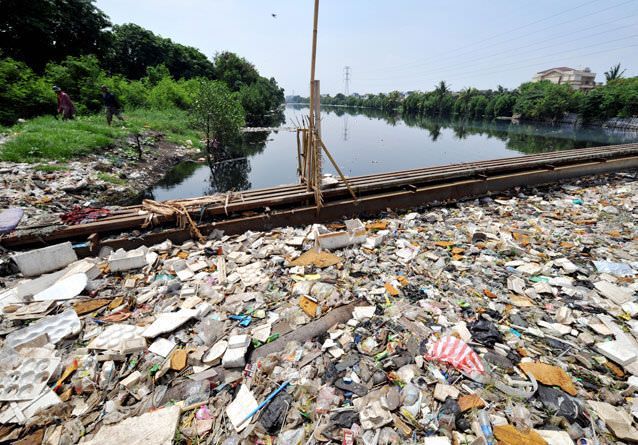Indonesia Scrubbing The 'World's Dirtiest River'
Published on by Water Network Research, Official research team of The Water Network in Government
Using this polluted water is a risky calculation for many of the 30 million people who rely on it for irrigation, washing and even drinking water.
The scabies on Indonesian rice farmer Yusuf Supriyadi's limbs are a daily reminder of the costs of living next to the "world's dirtiest river".

Citarum river, Indonesia, Image source: Wikimedia Commons, Labeled for Reuse
Supriyadi depends on the Citarum's murky waters -- a floating carpet of household rubbish, toxic chemicals and animal feces -- to irrigate a small rice plot in West Java that sustains his family of six.
The farmer's rice yield is now down by two-thirds in the rainy season as textile factories dump more and more industrial waste into the river. But he has few other options.
"There are floods during the rainy season. My hands get itchy and the harvest is damaged," the 54-year-old tells AFP.
"Pollution makes my rice hollow. If I keep going I'll lose money, but if I don't, I'll have no other job," he adds.
Now faced with a health emergency after decades of failed clean-up efforts, Jakarta is stepping in with a seemingly impossible goal: make the Citarum's water drinkable by 2025.
Using this polluted water is a risky calculation for many of the 30 million people who rely on it for irrigation, washing and even drinking water -- including around 80 percent of residents in the sprawling capital Jakarta.
At nearly 300-kilometres long, the river is also a key source for hydroelectric power for Indonesia's most populated island Java and tourism hotspot Bali.
The World Bank declared it the most-polluted river in the world a decade ago, an description widely picked up by media and environmentalists.
Waste levels can vary depending on how pollution is measured and the time of the year.
But the Citarum is dangerous by almost any standard.
Previous research has shown it has alarming levels of toxic chemicals -- including 1,000 times more lead than the US standard for safe drinking water.
It regularly appears on most-polluted lists alongside India's Ganges river, the Mississippi river in the United States and China's Yellow river.
Read full article: NDTV
Media
Taxonomy
- Decontamination
- Decontamination
- Contaminant Removal
- River Studies
- Environment
- Pollution
- Contaminant Movement Mapping
- River Engineering
- River Basin management
- River Restoration
- River Engineering
- Pollution